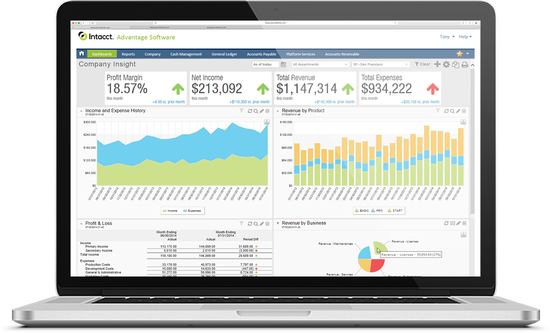
COVID-19’s Impact and Recovery for the Restaurant Industry — Cash Flow, Business Models, The Future, Crisis Lights, Cash Forecasting, & Survey Conclusions
The COVID-19 pandemic continues to impact the restaurant industry. Uncertainty looms with the on-going challenges of containing the virus. This uncertainty creates obstacles in business decision-making. With public health requirements and customer preferences changing as the graphs on infections and deaths rise and fall, restaurants have more hurdles than ever. These challenges mean that restaurants need to respond quickly to a constantly changing environment.
Our national partner, Sage Intacct, and the National Restaurant Association surveyed over two-hundred restaurant finance leaders. This survey revealed COVID-19’s impact on their business, their actions in response, and their lessons through the process. Here is what they have to share.
In Unprecedented Times, Restaurants Face Tough Decisions About Cash Flow
There is much at stake for restaurants during a pandemic, especially when opening and closing mandates exist out of restaurants’ control. The difference between surviving and closing the doors can come down to cash flow. Some restaurants are growing during the pandemic (more on them below); others have had to reduce outgoing cashflow. Of the restaurants surveyed:
- 54% furloughed employees and reduced overhead.
- 10% reported closed or closing soon
While there is so much at risk and unpredictability in these times, it is necessary to have a complete picture of your current cash status and forecast. This is essential so you can make informed, data-driven decisions. In some cases, you can negotiate updated terms with your vendors and partners and be more strategic in scheduling the timing of your payments. Cash management tools are available to help multi-location restaurants gain insights into all working capital. These tools help restaurants adjust to evolving requirements.
Sage Intacct offers a cash management tool with a forward-looking view of your financials rather than looking in the rearview mirror. You’ll gain greater transparency and the capacity to make more educated decisions on labor and maintenance needs in all your restaurant locations.

Your Restaurant Business Model Will Evolve Drastically During A Pandemic
Throughout COVID-19, restaurants have had to adapt to continue their businesses. While many restaurants failed, many others made some strategic but tough decisions that increased their revenue.
- 52% reviewed and reevaluated vendors and vendor pricing
- 41% made changes to food, menu, and delivery
Before the COVID-19 outbreak, 45% of those surveyed were already using a third party delivery service for food orders. After COVID-19, that percentage jumped to 58%. And, of that 58%, 68% increased their revenue.
The pandemic accelerated an increase in restaurants using food delivery services. Based on the above percentages, most surveyed restaurants increased revenue as a result. It is essential to continue the delivery service during and post-pandemic since your customer’s habits will likely continue in the future.
To increase success for delivery services, simplify your kitchen operation and menu items. Simplifying will reduce undue pressure on potentially strained workers. Preserve your margins and make sure to accommodate food travel time.
Most Restaurant Finance Leaders Believe the Worst Part of COVID’s Impact Is Over
Of restaurants surveyed, most are optimistically moving forward with caution. React, Adjust, Prep for Recovery, and Rebound are the four phases restaurants navigate during a crisis. 52% of restaurants surveyed are in the Prep for Recovery or Rebound phase.
Most restaurants expect long-term changes to their business models post-crisis.
- 8% had no change to their pre-COVID model
- 22% experienced a slight difference with increased marketing and communications to customers and different suppliers
- 56% experienced a moderate change – for example, off-premises/delivery will be a more vital part of their model going forward, and dining areas will change in configuration
- 15% experienced significant change; in some cases, some or all of their locations will not reopen
While many restaurant owners believe they are on the recovery track, they still understand that long-term operations will look different from the days before COVID-19.
Below, we share the remaining areas of impact and conclude with solutions the survey revealed for restaurants to emerge stronger.
 In Crisis, Light Shines On Operational Areas Needing Improvement
In Crisis, Light Shines On Operational Areas Needing Improvement
There are daily and weekly changes within the restaurant business. It’s imperative to have greater efficiency and visibility in tracking financial data and operations.
Of the restaurants surveyed, below are areas needing improvement revealed during COVID-19.
- 67% say financial technology could help
- 21% still rely on Excel spreadsheets to track financial data
- 37% say it can be hard to get data needed for decision-making or not to have the most current data
If you are in the 21% who still rely on Excel to track your data, your reporting process is most likely too manual and costing you too much time.
Using Excel leaves you without the capacity and current information to make critical decisions from a well-informed position. It can cause significant delays that will have great effects on profitability.
A Top Action In A Recovery Plan is Cash Forecasting
Below are the top five items appearing in recovery plans:
- 67% are reviewing cash forecasts and financial performance for operational improvements
- 47% are making changes to food items or other menu offerings
- 12% are purchasing other distressed restaurant businesses
- 12% are investing in new back-office technology to ensure optimal financial recovery
- 8% are investing in new front-office technology to get ahead of the competition
Cash forecast reviews and keeping a close watch on your financial performance are top action items of recovery planning. To sustain recovery, many restaurants take the opportunity to invest in other restaurants and new technologies.
Suppose you are planning one or some combination of these, performing a model cash forecast for various scenarios considering reopening 3, 6, 12, or 18 months out while factoring in the nuances of each regional market. In that case, you can determine with more precision and confidence the combination of action items to pursue.

Conclusion of The Survey
The 230 finance restaurant leaders who participated in the COVID and Impact survey achieved clarity that cost reduction, optimization of operations by implementing automation, and careful investments will serve them well.
Many are cautiously optimistic about their rebound and realize they need the right tools that offer live data visibility for smart decision-making.
A modern cloud accounting system helps you drill down to the areas where you can cut costs, grow revenue, and increase operational efficiency. With the number one rated cloud accounting system in customer satisfaction, you get:
- Real-time insights for smart decision-making
- Fast, easy reporting with drill-down in the system
- Automation of day-to-day processes such as invoices, payments, consolidations, reconciliations, and other transactions
Sage Intacct has helped hundreds of customers just like you respond favorably and recover quicker.
We at Trusted CFO Solutions invite you to take the next step by connecting with the Trusted team, ready to help you emerge stronger.
Tags
Outgrowing Quickbooks?
Say goodbye to spreadsheet reporting and manual consolidations and start using a cloud-based financial management system.
Related Content
Wrap-Up: Reimagine Your Month-End Close with Sage Intacct
Best Practices to Perfect Your Month-End Close With Sage Intacct
Decoding the Challenges of the Month-End Close
Fast-Track Your Financials: Techniques to Slash Your Month-End Close
Take Control of the Month-End Close: A Checklist for Success
Managing Your Accounts Payable: A Guide for Small Business Owners
© Trusted CFO Solutions.






